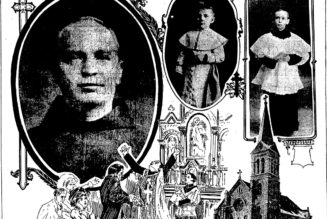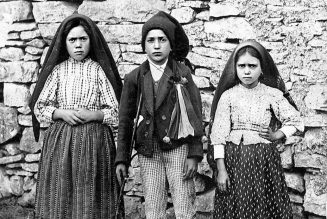
For Planned Parenthood, artistic license and freedom are permitted — just so long as they serve the pro-abortion narrative.
The last thing Australian film director Andrew Dominik expected when he released his new Marilyn Monroe biopic Blonde was the criticism that he would draw from Planned Parenthood.
The film, currently streaming on Netflix, is based on a 2000 Joyce Carol Oates novel by the same name, and tells the fictionalized life story of Norma Jeane Mortenson.
Over the course of the biopic (which I have not seen, and which carries an NC-17 rating allegedly due to graphic sexual content), Monroe is depicted being forced to undergo two (illegal) abortions, which leave her with lasting emotional scars. One scene in particular finds her about to have her second abortion, interacting with a vision of her unborn baby. The baby asks her, “You won’t hurt me this time, will you?”
Now nothing about that scenario ought to ring unrealistic, or even particularly controversial. This notion that a woman might be haunted by her choice to have an abortion — especially if, as the film asserts, it was not really a “choice” at all — is at least plausible. Not to mention that the film is a story — one director’s attempt at recreating the life of an admittedly tragic cultural icon. In this particular story, the audience is invited to bear witness to the heroine’s private struggle with the loss of her aborted babies.
And it makes for heavy subject matter, certainly, but then how could a Marilyn Monroe biopic not? If you know anything about her life story, then you know such things come with the territory. It is, well, a really sad story.
But Dominik’s portrayal of abortion apparently broke all the rules. He wasn’t supposed to show a fully-formed CGI image of a baby. He wasn’t supposed to give that baby an actual voice. And he wasn’t supposed to feature a woman who was permanently haunted by these procedures, suffering emotional anguish.
At least, not according to Planned Parenthood. Caren Spruch, Senior Director for the Arts and Entertainment Division of Planned Parenthood, told Variety:
As film and TV shapes many people’s understanding of sexual and reproductive health, it’s critical these depictions accurately portray women’s real decisions and experiences. While abortion is safe, essential health care, anti-abortion zealots have long contributed to abortion stigma by using medically inaccurate descriptions of fetuses and pregnancy. Andrew Dominik’s new film, Blonde, bolsters their message with a CGI-talking fetus, depicted to look like a fully-formed baby.
Is Spruch making the bold (and impossible-to-prove) claim that this could not possibly have been Marilyn Monroe’s “real” experience? How would she know? And is it really so beyond the pale for a director to represent an unborn baby as looking like a baby? She goes on:
Planned Parenthood respects artistic license and freedom, however, false images only serve to reinforce misinformation and perpetuate stigma around sexual and reproductive health care. Every pregnancy outcome — especially abortion — should be portrayed sensitively, authentically, and accurately in the media. We still have much work to do ensure that everyone who has an abortion can see themselves onscreen. It is a shame that the creators of Blonde chose to contribute to anti-abortion propaganda and stigmatize people’s health care decisions instead.
Well then. Apparently, artistic license and freedom are permitted — just so long as they serve the pro-abortion narrative.
And post-abortive women deserve to see themselves represented on screen — just so long as they are exclusively happy with their decision to obtain an abortion.
No one would ever make the case that Marilyn Monroe’s life was particularly happy, in general. Scrawled in Monroe’s own journal (made public in 2010 as part of the book Fragments: Poems, Intimate Notes, Letters) were the words, “Alone!!!!!!! I am alone I am always alone no matter what.”
In a sense, all throughout her life, she was alone. The daughter of a schizophrenic mother, Marilyn spent her childhood bouncing between orphanages and foster homes. As an adult she would be raped, subjected (by the movie studios making money off of her) to multiple rounds of invasive psychoanalysis sessions, was married three times and died alone at home, aged 36, of a drug overdose. Though not everyone agrees about the nature of the overdose — some theorize suicide, others an accidental death, and still others believe she was murdered — one thing everybody believes is that she was an exceptionally tragic figure.
It is especially sad, then, that a woman who spent her entire life facing down her inner demons would, decades later, be denied the most basic of rights: to grieve her own children. According to Caren Spruch, Monroe’s personal pain should not only be ignored and denied, but sacrificed on the altar of the almighty abortion dollar. Heaven forbid movie watchers see a woman feeling sad about her abortions!
Blonde, beyond offering insight into the painful life of its iconic subject, will give viewers some big things to think about. (Hopefully, Planned Parenthood’s desire to silence storytellers will also make people think.) Marilyn Monroe may have died alone, a victim of despair and brokenness, but she was not without human dignity. Contrary to Spruch’s narrow and uninformed opinion, the grief Marilyn likely experienced as the result of multiple abortions was both authentic and real. But then, thankfully, so is God’s mercy.
[embedded content]
Join Our Telegram Group : Salvation & Prosperity









